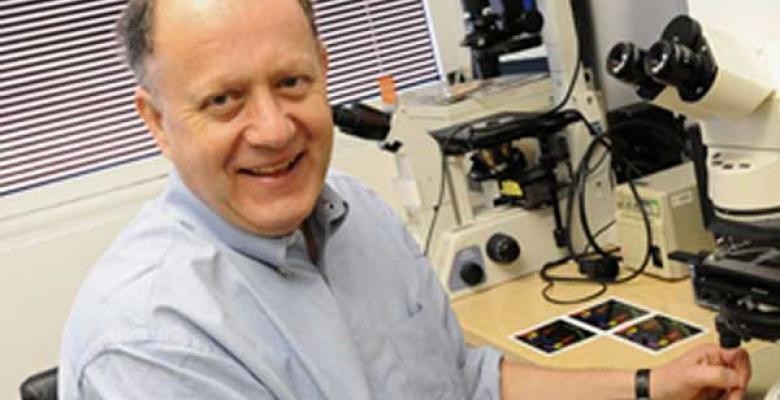Prof. Thomas Jessell Wins Gruber Prize for Spinal Cord Neuron Research

Thomas Jessell, PhD, the Claire Tow Professor of Motor Neuron Disorders in the Departments of Neuroscience and of Biochemistry and Molecular Biophysics at Columbia University, is the recipient of the 2014 Neuroscience Prize of The Gruber Foundation. Jessell is being honored with this prestigious international award for his seminal work on the development and wiring of spinal cord neurons involved in the control of movement. He is also co-director of the Mortimer B. Zuckerman Mind Brain Behavior Institute, co-director of the Kavli Institute for Brain Science, and a Howard Hughes Medical Institute investigator, all at Columbia.
The award will be presented to Jessell, in Washington, D.C., on Nov. 16 at the 44th annual meeting of the Society for Neuroscience. “Tom Jessell is one of the world’s leaders in the field of developmental neuroscience,” says Ben Barres, a member of the Neuroscience Selection Advisory Board. “His research has completely changed our understanding of the mechanisms of neural circuit assembly and function, which, in turn, has helped create a blueprint for the development of potential treatments for a variety of neurodegenerative diseases.”
When Jessell began his research more than three decades ago, very little was known about the movement-controlling neural circuitry of the spinal cord, one of the most evolutionarily conserved regions of the central nervous system (CNS). Through a groundbreaking series of studies, Jessell revealed how naïve neural cells develop into hundreds of distinct subtypes of motor neurons to form that remarkable circuitry. He was the first scientist to show, for example, that a specific signaling protein known as Sonic hedgehog (Shh) determines the “fate” (subtype identify and role in movement) of many of these cells.
Jessell has also described the precise way in which the distinct subtypes of spinal neurons are connected with each other and how they control the patterned activity of their muscle targets. In addition, he has led the way in demonstrating that Shh and other signaling pathways can be manipulated to influence the process by which stem cells mature into motor neurons. As a result, scientists now have a deeper understanding of how stem cells might be used to treat degenerative spinal cord diseases, including amyotrophic lateral sclerosis (ALS).
Because of Jessell’s research, the spinal cord is now considered a model system for studying neural development and is widely used by scientists to better understand the neural circuitry of other, more complex areas of the CNS.
His more recent studies have focused on the mechanisms that wire circuits for limb movement, with the premise that genetic manipulation of individual neuronal classes can begin to uncover principles of circuit function as well as organization. Through the application of molecular information about neuronal identity to monitor, manipulate, and model the activity of specific classes of neurons, his work has also provided systems- and circuit-level insights into the neural control of limb movement.
“Jessell’s discoveries have had a profound effect on all areas of neuroscience, which is why it’s so fitting that he is being acknowledged and honored with this award,” says Carol Barnes, chair of the Selection Advisory Board to the Neuroscience Prize.